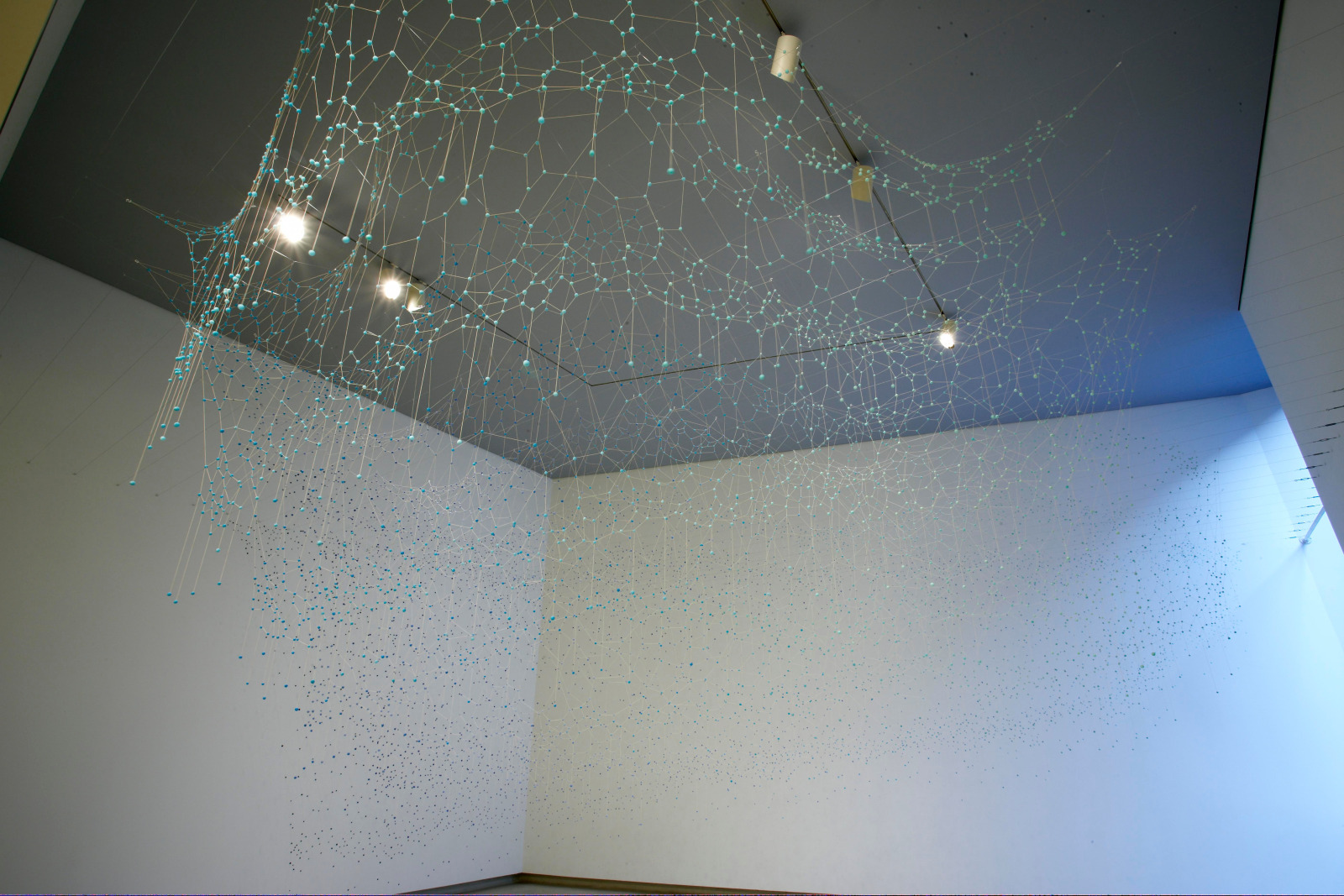
Carnegie International 2008 artist Ranjani Shettar works on her installation "Just a Bit More," comprising thousands of tiny hand-molded beeswax balls positioned on cotton thread webbing.
The 2008 Carnegie International opens a month from tomorrow and the Carnegie Museum of Art galleries are well into the visual and architectural transformations that the large contemporary art exhibition ignites.
International artworks have been arriving for some time through the museum's huge loading docks. More recently, artists' crews and sometimes the exhibiting artists themselves have been pouring into the museum, working alongside staff to install work as opening day nears for this second oldest such survey exhibition in the world.
It's an intense time, but Ranjani Shettar of Bangalore, India, took a break from working on her installation, "Just a Bit More," to talk last week. A week earlier, her first solo exhibition in a U.S. museum had opened at The Institute of Contemporary Art, Boston.
The petite artist, dressed in jeans, a white blouse and a rose-colored sweater, had spent the day on a lift so that she could reach into an ethereal webbing of tea-dyed cotton thread suspended throughout the gallery. She was giving it form through the studied placement of thousands of hand-molded beeswax pebbles that she had colored with pigments in gradients of blue.
The overall effect resembles that of peering into the night sky, one's vision strained to the boundary of perceptual space, the volume of which is expanded in the imagination by the presumptive multiples that lie beyond. The viewer becomes absorbed in vastness -- in the abundance of possibility and of unanswerable questions -- whether the resultant contemplation is of the cosmos, microcosms, or metaphysical depths.
Those concerns are reflected in Shettar's technique for this piece. Because it is "very, very labor-intensive, it allows me to draw myself completely into the process. I like that. It's very meditative and allows me to focus."
Characteristic of contemporary artists, Shettar, who has worked with material as diverse as discarded car bodies and mud, doesn't assign specific interpretation. But she does offer that, from the very beginning of her artmaking, "it was all about connections." Noting the spaced beeswax orbs, she observes, "if one of them is off, the balance is lost," a reference to social systems as well as to the formal appearance of the artwork.
Her work was first exhibited in the United States in 2003 at the Walker Art Center, Minneapolis, in a show co-organized by Douglas Fogle, then Walker curator and now Carnegie International '08 curator. At the time he wrote, "Above all else, Shettar's work asks phenomenological questions about the way in which we inhabit particular spaces in our built environment."
Fogle also recommended Shettar as an artist-in-residence at Artpace in San Antonio in 2006. In 2004, she made her solo New York debut at the Talwar Gallery.
She's a seasoned player on the big international show circuit. "Just a Bit More," for example, presented in different configurations in response to varying spatial opportunities, was included in the 2006 Sydney Biennale, Australia, and the 2007 Lyon Biennale, France.
While acknowledging that individuals inevitably represent their countries of origin, Shettar doesn't believe that her work is constrained by or a response to her nationality or ethnicity, nor does she believe she was invited to participate in the International because of those qualities.
Born in 1977 in Bangalore's high-tech center, Shettar lived elsewhere during her childhood. She returned to Bangalore to attend school and has remained there since. Though she resides in a bustling global high-tech environment, Shettar grew up "very close to nature," and one may see influences in her installation ranging from spider webs to Weblinks.
While she is aware that personal experience and immediate surroundings impact an artist's expression, Shettar says that she's "looking at something beyond that ... at things that are more universal."
-Mary Thomas